Folds
Steven Dutch, Professor Emeritus, Natural and Applied Sciences,University of Wisconsin - Green BayPrincipal Fold Structures
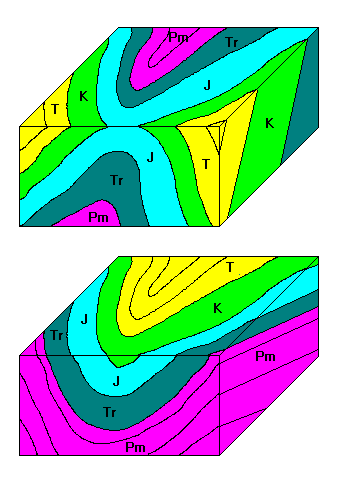 |
Anticlines are folds where the rocks arch upward. On geologic maps they show up as structures with old rocks in the middle and younger rocks outside. |
| Synclines are folds where the rocks bow downward. On geologic maps they show up as structures with young rocks in the middle and older rocks outside. | |
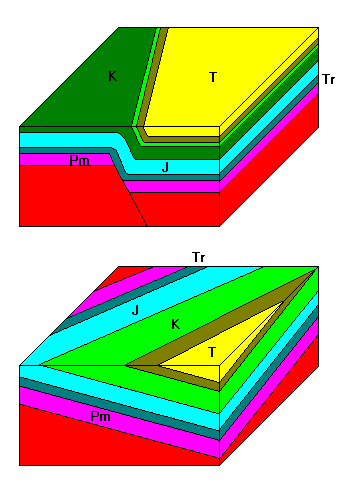 |
Monoclines are steps in otherwise horizontal, or nearly horizontal, rocks. Very often they overlie faults, but the rocks merely sag over the fault offset instead of being broken. |
| Homoclines aren't really folds, but are places where the rocks slope, or dip, in the same direction over a large area. The homocline may or may not be part of a larger structure. |
Complex Large Folds
Some folds are extremely large and so complex that simply calling them anticlines and synclines is misleading. In the map below, covering central Pennsylvania, the large fold at left center has a small core of Cambrian rocks surrounded by younger rocks. The overall structure of Cambrian through Devonian rocks consists of old rocks in the middle and younger rocks toward the outside, typical of an anticline. However, we can also see that there are a lot of smaller folds superimposed on the large fold. Overall it has the nature of an anticline, but is a lot more complex. A large, complex anticline-like structure is called an anticlinorium.
Southeast of the anticlinorium is a broad structure with the overall form of a syncline, but again much more complex. Such a structure is called a synclinorium.
The terms anticlinorium and synclinorium are typically used:
- To describe the overall structure of a region without becoming distracted by local details.
- For large folds that have numerous smaller folds superimposed on them, or that split into numerous smaller folds at either end.
- For large structures that are anticline- or syncline-like, but which may be partially bounded by faults or otherwise tectonically disconnected from adjacent structures.

Axis and Axial Plane
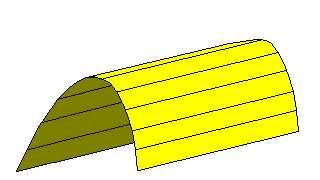 |
A cylinder is a three-dimensional surface that can be swept
out by a line that always maintains the same orientation. A fold that
approximates this shape is called cylindrical. Many folds can be approximated as cylindrical and this fact is important for analytical methods. |
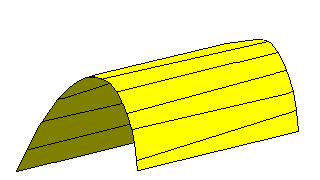 |
Non-cylindrical folds are possible. One fairly common case is for the fold to be more nearly conical than cylindrical. Fortunately, cones can also be easily analyzed. |
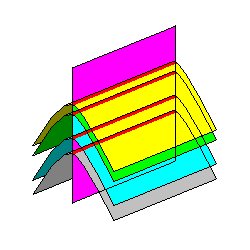 |
When a layer is folded, the line along the sharpest part of the fold is called the fold axis. In a succession of folded layers, the axes of each folded layer define a surface called the axial surface. If the axial surface is approximately planar, it is called the axial plane. |
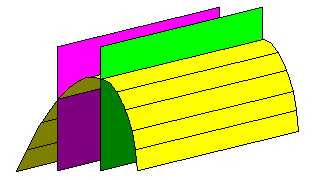 |
Because folds form by flattening, and foliation forms by flattening,
foliation is very often parallel to the axial planes of folds. Note that the intersection of bedding and foliation is parallel to the fold axis. |
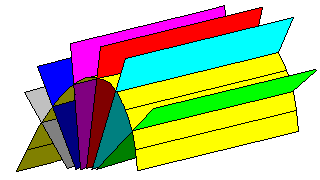 |
It's also fairly common for foliation to fan away from the center of the fold. In this case, too, the intersection of bedding and foliation is parallel to the fold axis. |
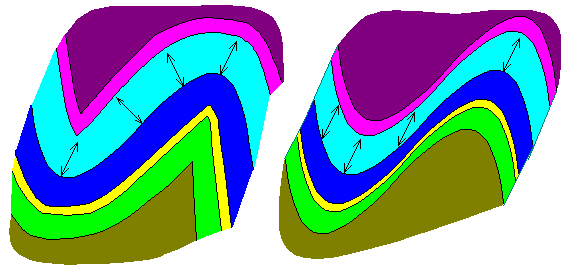
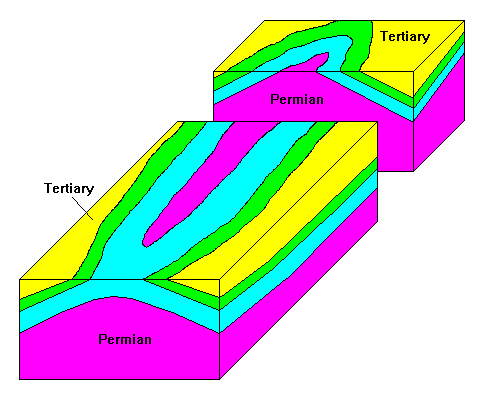
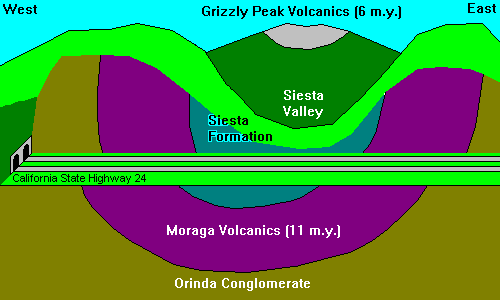
Return to Crustal Movements Syllabus
Return to Techniques Manual Index
Return to Professor Dutch's Home Page
Created
6 September 2006, Last Update12 June 2020